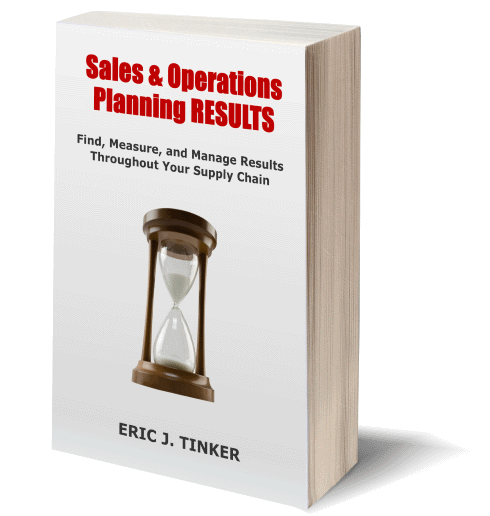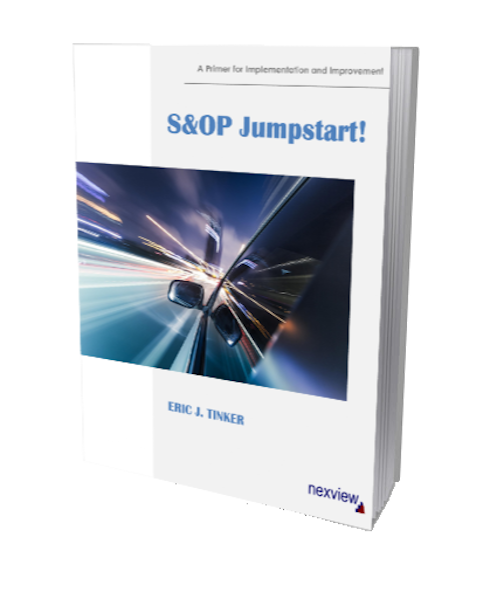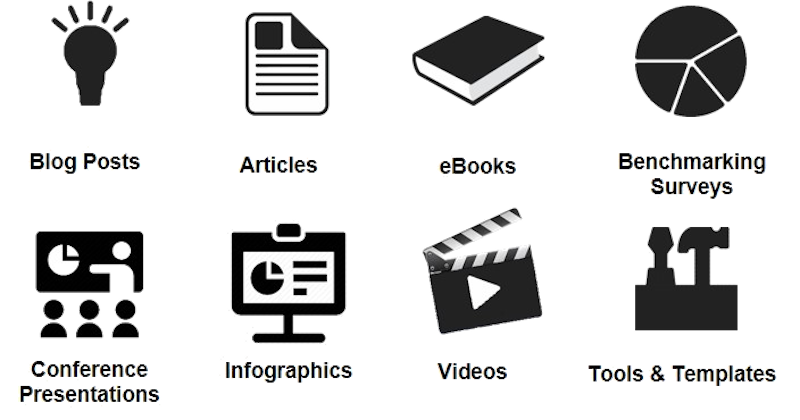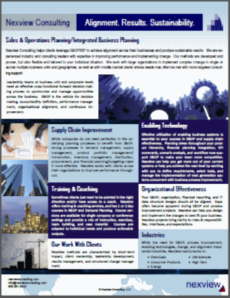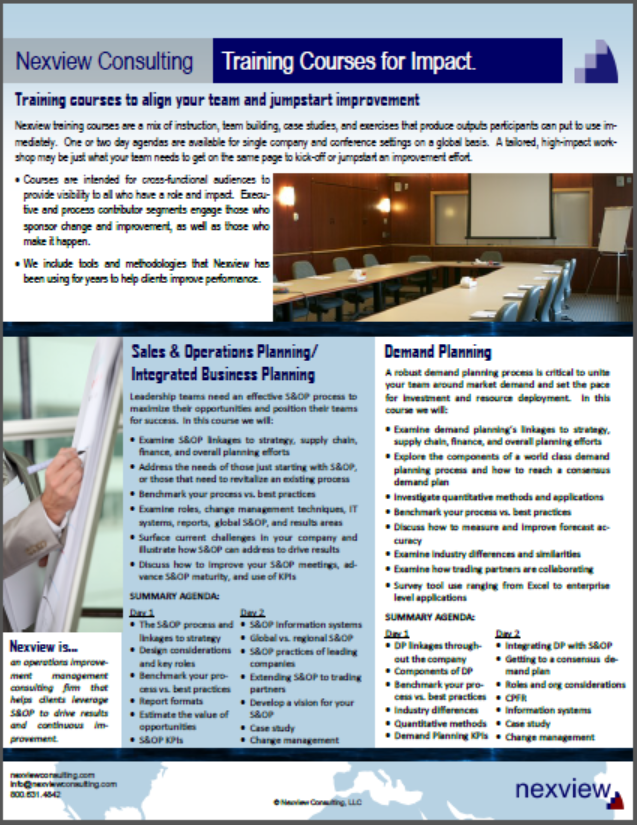Improving Your Forecast Accuracy
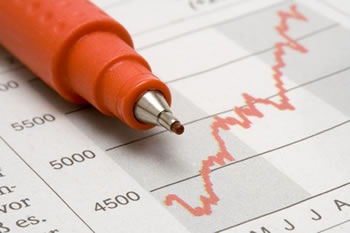
There are several dimensions or inputs to the forecast that are often considered, and working together hopefully yield the overall best result and forecast accuracy. The components described below are typically coordinated by a Demand Manager. In the end, the components feed a “final answer” or demand plan, you then measure the accuracy of that.
Statistical Forecast – Using history as a means of predicting the future is a place to start and form a baseline. Demand managers typically experiment with software tools and different models to see what works best for them. They will remove historical extraordinary events that would otherwise skew future predictions.
Historical Data – The best data to use is the data closest to the end user, for example point of sale data (available for purchase from services), that could very well be your customer’s customer purchases, or even one level further (e.g. many Consumer Products manufacturers in a 3 tier distribution system). You also have to look at your customer’s specific demand, in the end – they are the ones directly buying from you, but you can help them with understanding the source demand too!
Marketing input – Marketers typically are looking out more into the future (and often at more aggregate levels, they are also planning promotions and predicting the effect on demand. Price elasticity models are helpful here, but I see many companies that don’t have a good handle on this.
Sales input – Often sales is looking a bit more short-term, and working with direct customers (maybe distributors or other B2B), and perhaps also working with end users to create pull through demand. Their inputs are a separate line to the base forecast, or they make corrections to the base. The key is that they are talking to customers. If they can get customers to agree to a buy schedule that smoothes out demand, that’s a huge help to improve forecast accuracy and supply chain operations.
Macroeconomic effects – What are the macro economic trends that are believed to affect demand, if interest rates go up what happens, if oil goes down what happens etc, what about long-term weather patterns (e.g. agriculture, apparel), currency predictions, these type of things. This is also an area that most companies struggle with.
New Product Introductions – Not only on the new products, but what effect new products will have on the existing ones in the portfolio.
Budget – Let’s not forget what we all agreed to previously –> and what do we need to do to address any gaps.
Demand Consensus – All the high level functional heads (owners of the components above), come together and agree what the final answer is. This is a critical part of the Sales & Operations Planning flow. This is a monthly meeting where discussion is at the product family level. Also review demand prediction KPIs in this meeting.
The meeting owner (often a VP Sales) makes the final call and is often ultimately accountable (i.e. owns the demand plan).
Demand Sensing – A fairly new term, involves techniques to implement changes within the month to respond to short term effects/actual orders. Works best in environments that have responsive supply chains.
Measurement of Forecast Accuracy (and perhaps other related KPIs, like bias) – Set monthly improvement targets and measure against it, determine root causes of deviations, work the above processes and continue the cycle. Some companies measure KPIs on the components described above to see if some of the inputs should carry more weight.
You can see it can be an involved complex process, in the end you measure, work the process, work the behaviors, measure again and continue the cycle. I tell my clients, you don’t have to be perfect, just better than the other guy!





